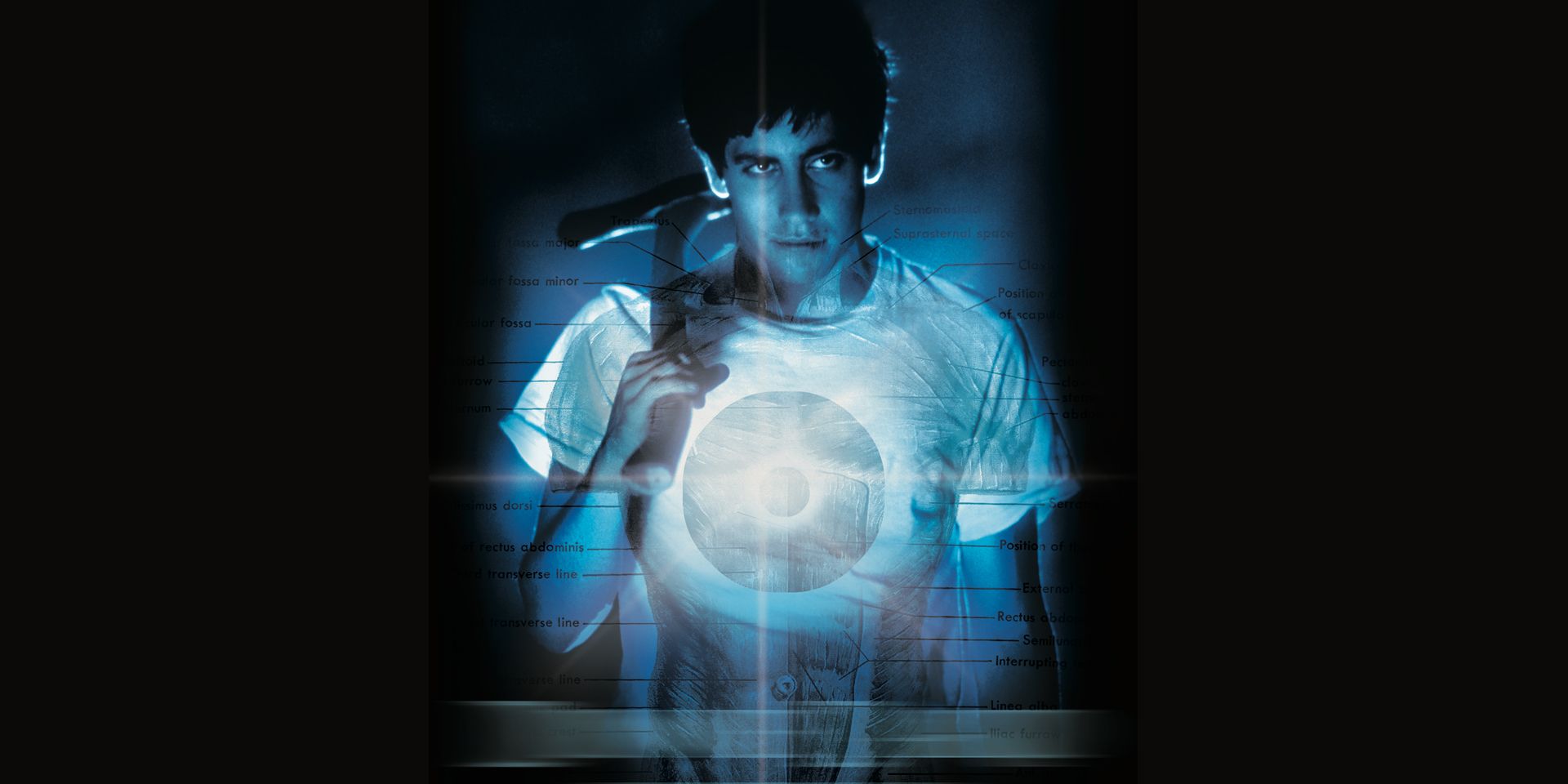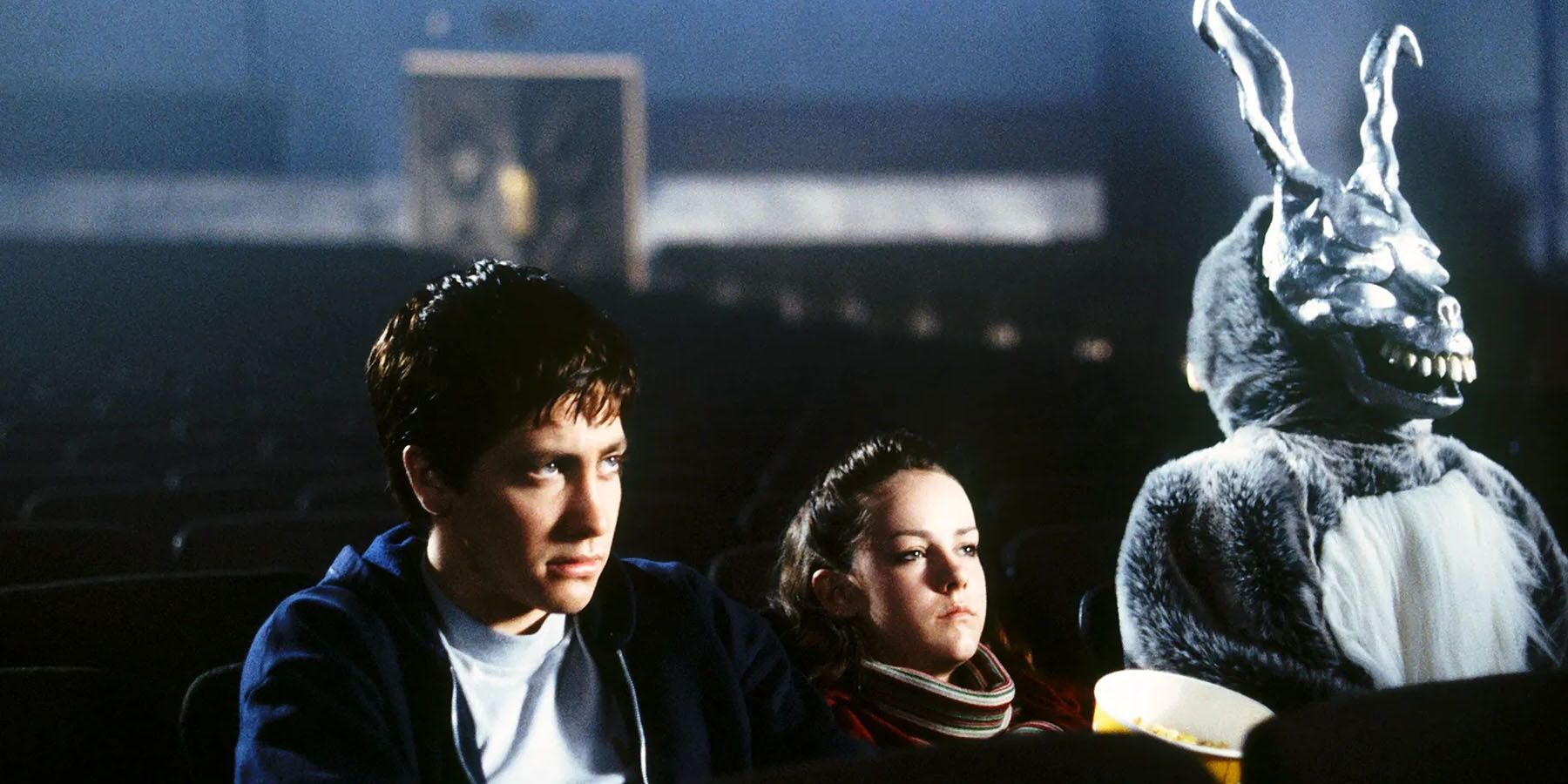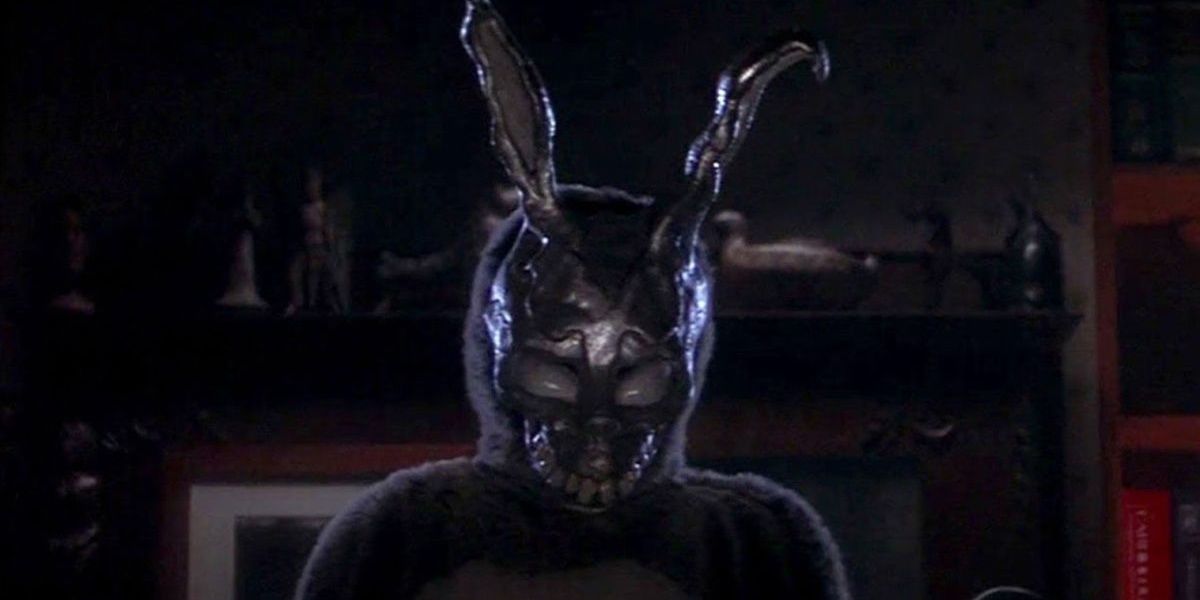Donnie Darko, written and directed by Richard Kelly, was a dud upon its initial US theatrical release in October 2001. Blame it, at least in part, on 9/11. Arriving just a month after the unprecedented terrorist attacks, no one was in the mood to see anything involving airplanes falling from the sky. The entire planet was, literally, in a state of shock and American moviegoers couldn’t connect with Donnie Darko’s overt nihilism and mind-numbing sci-fi complexities. It pitifully grossed just half a million at the box office on a $4.5 million budget. It’s amazing that after such an inauspicious launch, Kelly’s film is now a bona fide cult classic, the subject of intense study, and considered by many to be a modern cinematic masterpiece.
Donnie Darko struck a chord in the UK where it was released a year later in October of 2002. Audiences were enamored by the film’s talented cast, nostalgic soundtrack, and challenging plot. This led to the film receiving a re-issue where it grossed an additional $7.5 million and landed spots on Empire Magazine’s lists of Best Independent Films and 500 Best Movies of All Time. Additionally, it would go on to earn a staggering $10 million upon its home video release, a nearly unimaginable feat. As a response to both the film’s success and the lingering questions regarding the plot, Kelly released a Director’s Cut of Donnie Darko in 2004.
Donnie Darko stars Jake Gyllenhaal, Jena Malone, Maggie Gyllenhaal, Drew Barrymore, Mary McDonnell, Katharine Ross, Patrick Swayze, Noah Wyle, Stu Stone, Daveigh Chase, James Duval, and Seth Rogen. “Set in October 1988, the film follows Donnie Darko, an emotionally troubled teenager who inadvertently escapes a bizarre accident by sleepwalking. He has visions of Frank, a mysterious figure in a rabbit costume who informs him that the world will end in just over 28 days.”
Not all Director’s Cuts are created equal. Some are honest attempts by filmmakers to correct mistakes, enhance mythologies, and undo perceived studio interferences. Others are slipshod cash grabs designed as much by interfering studios and distributors as the directors themselves. When examining the Director’s Cut of Donnie Darko, it’s important to ask: “What does this version add?” and “Is this even necessary at all?” While the answer to the first question is “Plenty” the answer to the second question may depend on your personal relationship with the film and which aspects of Donnie Darko you consider to be the most “important”.
From a cinematic standpoint, the additional scenes in the Director’s Cut of Donnie Darko are a mixed bag. The cast is so good and the relationships portrayed feel so genuine that we enjoy spending more time with the Darko family. Extended household interactions, quiet scenes involving parents Rose and Eddie Darko (played by Mary McDonnell and Holmes Osborne respectively), and a subplot involving Watership Down are wonderful. Other new scenes feel unnecessary and even distracting, specifically Donnie's poem about Frank and extended moments of racial-biased bullying. Then there’s what many consider to be the addition of a huge flaw: The medication Donnie has been taking to treat his mental illness is revealed to be a placebo. This is in spite of the fact that Donnie has been diagnosed with schizophrenia, and we see him struggling to stay awake and coherent while medicated. It’s not merely confusing; it’s unethical.
These enhancements and perceived flaws aside, it is 100% necessary to watch the Director’s Cut of Donnie Darko to understand the plot, mythology, and conclusion. In fact, these aspects are impossible to deduce without the Director’s Cut. You can watch the theatrical cut a dozen times and never realize that Donnie has superpowers including enhanced strength and telekinesis. The theatrical cut convinces us that the world is ending without giving us the tools to decipher why. We see Frank the Bunny (played by James Duval) as both a terrifying vision and an actual person without any context or explanation.
Most importantly, the Director’s Cut of Donnie Darko includes passages from the nonexistent book The Philosophy of Time Travel penned by the fictional author Roberta Sparrow, aka Grandma Death (played by Patience Cleveland). While we saw this book in the theatrical release, its contents remained a mystery beyond a graphic illustrating the “helpers” that lead people along “God’s channel” by emerging from our solar plexus. This time, we’re introduced to many important and integral concepts: The Primary Universe, the Tangent Universe, the Artifact, the Living Receiver, the Manipulated Living and the Manipulated Dead, and an Esurance Trap. Familiarity with all of these concepts is crucial when attempting to understand what is happening in Donnie Darko and why.
Here's the kicker: Even with all the necessary detail provided in the Director’s Cut of Donnie Darko, it’s still an immensely difficult film to understand. That’s because any story dealing with time travel is bound to land you somewhere near a madness-inducing paradox, and this one is no different. While the Director’s Cut gives us tools to work with and a vocabulary to use, one still needs a basic understanding of stable time loops. YouTube is awash with videos attempting to put it all into easily digestible explanations, but even those that include illustrations can be tough to wrap your mind around.
Still, anyone interested in establishing a deeper relationship with the characters will want to check out the Director’s Cut. And, as clearly established, the material revealed is crucial for anyone attempting to truly understand the film’s metaphysical concepts. But be warned: Consuming the Director’s Cut may shift your experience from an emotional one to an analytical one. You may first yourself more absorbed in the “science” and less concerned with the story’s humanity, angst, and love. It’s also worth noting that the answers, while based on academic theory, are all somewhat magical in actuality. While it all makes perfect sense in the world of Donnie Darko, no one will walk away with the ability to travel backward in time.
Richard Kelly must be commended for creating a time-travel story that doesn’t decay into a feedback loop of paradoxes. Still, Donnie Darko puts the onus of understanding squarely on the viewer’s shoulders. For that reason, those looking for spoon-fed entertainment will always struggle with this film. And while it’s heartening to know that “answers” are provided, true “understanding” of Donnie Darko takes time and effort. Ultimately, the film’s themes are best understood through an examination of Donnie himself, not the mind-bending circumstances he finds himself in. Because Donnie Darko isn’t a film about time travel. Donnie Darko is a film about one teenager’s quest for love and fear of death. Thankfully, we’ll still be unpacking this one for decades to come.



